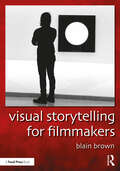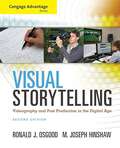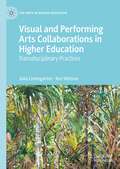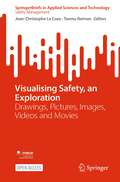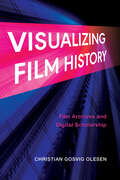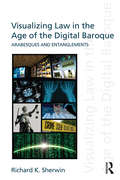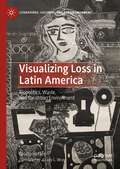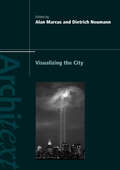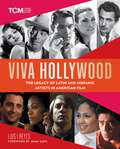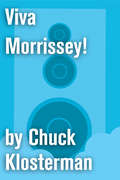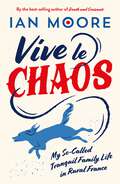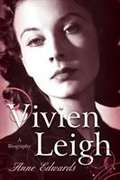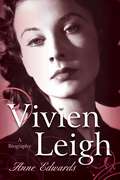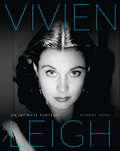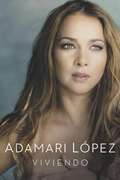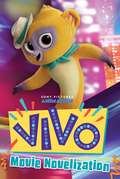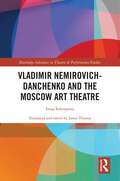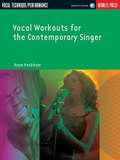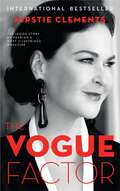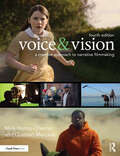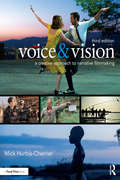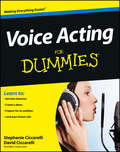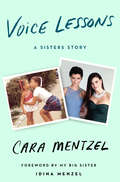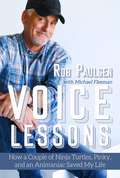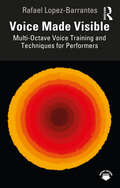- Table View
- List View
Visual Storytelling for Filmmakers
by Blain BrownDirectly addressing how filmmakers can craft visually powerful films through practical skills that can be used throughout the filmmaking process, author Blain Brown explores how we use space, color, camera angles, composition, motion, POV and all the other methods in the day-to-day work of telling stories visually. Brown interrogates not only the tangible aspects of visual storytelling, but also the more abstract areas as well including visual metaphor, manipulating time and space, and visual subtext. It covers all the aspects of visual storytelling that directors, cinematographers, and editor use to tell stories visually. Written by a working filmmaker with over 30 years’ experience as a director and cinematographer, this book looks at both the how and the why of visual storytelling, consistently drawing on the day-to-day real-world environment of making a film. Ideal for intermediate and advanced students of filmmaking as well as professionals working in the industry. Topics Include: • Building A World • Cinematic Space • Visual Metaphor • Frame & Composition • Using Color • Time & Space • Light & Shadow • Visual Forces • POV & Eyelines • Motion • Lens & Focus • Establishing • Case Studies.
Visual Storytelling: Videography and Post Production in the Digital Age
by Ronald J. Osgood M. Joseph HinshawVISUAL STORYTELLING: VIDEOGRAPHY AND POST PRODUCTION IN THE DIGITAL AGE SECOND EDITION combines a thorough exploration of essential storytelling concepts with detailed instruction in practical technical skills. Without limiting its focus to a particular range of equipment, applications, or technology, this engaging text covers the key concepts, aesthetics, and techniques of single-camera field production and post production, and includes real-life stories and suggestions from working professionals.
Visual and Performing Arts Collaborations in Higher Education: Transdisciplinary Practices (The Arts in Higher Education)
by Julia Listengarten Keri WatsonThis book examines the role of the visual and performing arts in higher education and argues for the importance of socially engaged transdisciplinary practices, not just to the college curriculum but also to building an informed and engaged citizenry. The first chapter defines and offers an outline for conducting transdisciplinary research. Chapters two through five present examples of transdisciplinary projects facilitated in Central Florida between 2017 and 2022. Topics and methodological frameworks include ecocriticism and climate change, migration, poverty, and displacement, ageing and disability, and systemic racism and mass incarceration. Each chapter includes descriptions of the projects and outlines how they integrated the essential learning outcomes articulated by the American Association of Colleges and Universities in the Liberal Education and America’s Promise report. A concluding chapter offers reflections on the value of transdisciplinary collaborative work and poses questions for further discussions on the role of the arts in higher education. The book is designed for graduate and undergraduate students, faculty, and non-academics interested in engaging in transdisciplinary projects to address complex societal issues.
Visualising Safety, an Exploration: Drawings, Pictures, Images, Videos and Movies (SpringerBriefs in Applied Sciences and Technology)
by Jean-Christophe Le Coze Teemu ReimanThis open access book explores the role visual tools and graphical models play in safety management. It explains the importance of visualising safety, for teaching concepts, communicating ideas to peers, and raising awareness of potential threats through posters. Visualising Safety, an Exploration introduces graphical models which have been influential in promoting ideas of safety, and impacting the organisational design of safety mechanisms, including the Heinreich ‘safety pyramid’ and Reason’s ‘Swiss Cheese’. It analyses these models, as well as other forms of visualization, presenting viewpoints from academics and practitioners in the fields of safety science, history, ethnography and interface design.This brief will be of interest to anyone working in the field of safety management and design, including researchers, managers and students.
Visualizing Film History: Film Archives and Digital Scholarship
by Christian Gosvig OlesenThough many archival digital objects were not "born digital," film archives are now becoming important resources for digital scholarship as a consequence of digitization. Moreover, with advancements in digital research methods involving video annotation, visual analysis, and GIS affecting the way we look at archival films' material, stylistic histories and circulation, new research practices are more important than ever.Visualizing Film History is an accessible introduction to archive-based digital scholarship in film and media studies and beyond. With a combined focus on the history of film historiography, archiving, and recent digital scholarship—covering a period from the "first wave" of film archiving in the early 1900s to recent data art—this book proposes ways to work critically with digitized archives and research methods. Christian Olesen encourages a shift towards new critical practices in the field with an in-depth assessment of and critical approach to doing film historiography with the latest digital tools and digitized archives.Olesen argues that if students, scholars and archivists are to fully realize the potential of emerging digital tools and methodologies, they must critically consider the roles that data analysis, visualization, interfaces and procedural human-machinery interactions play in producing knowledge in current film historical research. If we fail to do so, we risk losing our ability to critically navigate and renew contemporary research practices and evaluate the results of digital scholarship.
Visualizing Law in the Age of the Digital Baroque: Arabesques & Entanglements
by Richard K SherwinVisualizing Law in the Age of the Digital Baroque explores the profound impact that visual digital technologies are having on the practice and theory of law. Today, lawyers, judges, and lay jurors face a vast array of visual evidence and visual argument. From videos documenting crimes and accidents to computer displays of their digital simulation, increasingly, the search for fact-based justice inside the courtroom is becoming an offshoot of visual meaning making. But when law migrates to the screen it lives there as other images do, motivating belief and judgment on the basis of visual delight and unconscious fantasies and desires as well as actualities. Law as image also shares broader cultural anxieties concerning not only the truth of the image but also the mimetic capacity itself, the human ability to represent reality. What is real, and what is simulation? This is the hallmark of the baroque, when dreams fold into dreams, like immersion in a seemingly endless matrix of digital appearances. When fact-based justice recedes, laws proliferate within a field of uncertainty. Left unchecked, this condition of ontological and ethical uneasiness threatens the legitimacy of law’s claim to power. Visualizing Law in the Age of the Digital Baroque offers a jurisprudential paradigm that is equal to the challenge that current cultural conditions present.
Visualizing Loss in Latin America: Biopolitics, Waste, and the Urban Environment (Literatures, Cultures, and the Environment)
by Gisela HeffesVisualizing Loss in Latin America engages with a varied corpus of textual, visual, and cultural material with specific intersections with the natural world, arguing that Latin American literary and cultural production goes beyond ecocriticism as a theoretical framework of analysis. Gisela Heffes poses the following crucial question: How do we construct a conceptual theoretical apparatus to address issues of value, meaning, tradition, perspective, and language, that contributes substantially to environmental thinking, and that is part and parcel of Latin America? The book draws attention to ecological inequality and establishes a biopolitical, ethics-based reading of Latin American art, film, and literature that operates at the intersection of the built environment and urban settings. Heffes suggest that the aesthetic praxis that emerges in/from Latin America is permeated with a rhetoric of waste—a significant trait that overwhelmingly defines it.
Visualizing the City (Architext)
by Alan Marcus Dietrich NeumannThis anthology presents a range of interdisciplinary explorations into the urban environment, through film, photography, digital imagery, maps and signage. Contributors examine our fascination with the city through the history of art and architecture, urban studies, environmental studies, cultural geography and screen studies.Bringing together a wide spectrum of urban contexts, Visualizing the City’s diverse essays explore visual representations of urbanism and modernity reflected through the prism of global cultures using an engaging variety of methods and texts.
Viva Hollywood: The Legacy of Latin and Hispanic Artists in American Film (Turner Classic Movies)
by Luis I. ReyesThrough an authoritative narrative and lavish photography, this is an in-depth history of the stars, films, achievements, and influence of the Hispanic and Latino community in Hollywood history from the silent era to the present day.Overcoming obstacles of prejudice, ignorance, and stereotyping, this group has given the world some of its most beloved stars and told some of its most indelible stories. Viva Hollywood examines the stars in front of the screen as well as the people behind-the-scenes who have created a rich legacy across more than 100 years.The role of Latin women on screen is explored through the professional lives of Dolores Del Rio, Rita Hayworth, Raquel Welch, Salma Hayek, Penélope Cruz, and many more. The book covers the films and careers of actors ranging from silent screen idol Antonio Moreno, to international Oscar-winning star Anthony Quinn, to Andy Garcia and Antonio Banderas. A spotlight is also given to craftspeople who elevated the medium with their artistry—visionaries like cinematographer John Alonzo, Citizen Kane scenic artist Mario Larrinaga, and Oscar-winning makeup artist Beatrice de Alba.The stories of these and many others begins through a lens of stereotyped on-screen personas of Latin Lovers, sexy spitfires, banditos, and gangsters. World War II saw an embrace of Latin culture as the &“Good Neighbor Policy&” made it both fashionable and patriotic to feature stories set south of the border. Social problem films of the 1950s and '60s brought fresh looks at the community, with performances like Katy Jurado in High Noon, the cast of West Side Story, and racial inequality depicted in George Stevens's Giant. Civil Rights, the Chicano Movement, and the work of activist actors such as Ricardo Montalban and Edward James Olmos influenced further change in Hollywood in subsequent decades and paved the way for modern times and stars the likes of Jennifer Lopez and Lin-Manuel Miranda.Illustrated by more than 200 full-color and black-and-white images, Viva Hollywood is both a sweeping history and a celebration of the legacy of some of the greatest art and artists ever captured on screen.
Viva Morrissey!
by Chuck KlostermanOriginally collected in Chuck Klosterman IV and now available both as a stand-alone essay and in the ebook collection Chuck Klosterman on Pop, this essay is about Morrissey fans.
Vive le Chaos: My So-Called Tranquil Family Life in Rural France
by Ian MooreFollow the hilarious misadventures of Ian Moore and his family as their search for serenity in rural France leads them on a journey of chaos, commotion and comedy. But despite the ups and downs, the Moore family persevere in true Brit style to create a unique, colourful and ultimately rewarding life in their new home - à la campagne!
Vivien Leigh: A Biography
by Anne EdwardsThis is the story of the actress who became a Hollywood legend by winning the coveted role of Scarlett O’Hara in Gone with the Wind, and whose circle included both theatrical and political celebrities, from Winston Churchill to Noel Coward, John Gielgud, and Marlon Brando. But behind the dazzling exterior lay the sinister shadow of another Vivien Leigh—a shadow which pursued her throughout her aristocratic upbringing, her frustrating first marriage, her tempestuous romance with Laurence Olivier, and her meteoric rise to stardom.
Vivien Leigh: A Biography
by Anne EdwardsThis is the story of the actress who became a Hollywood legend by winning the coveted role of Scarlett O&’Hara in Gone with the Wind, and whose circle included both theatrical and political celebrities, from Winston Churchill to Noel Coward, John Gielgud, and Marlon Brando. But behind the dazzling exterior lay the sinister shadow of another Vivien Leigh—a shadow which pursued her throughout her aristocratic upbringing, her frustrating first marriage, her tempestuous romance with Laurence Olivier, and her meteoric rise to stardom. As The New York Times wrote of the hardcover edition, &“To read her story is to be inspired with pity and terror.&”
Vivien Leigh: An Intimate Portrait
by Kendra BeanIn-depth research and new interviews are paired with rare and never-before-published photographs by LeighOCOs ?officialOCO photographer Angus McBean. "
Viviendo
by Adamari Lopez"Antes de recibir mi diagnóstico, andaba por la vida sin propósito, sin una razón de ser. Lo que me ha tocado vivir me hacía falta, necesitaba vivirlo. Tenía que pasar por esas experiencias dolorosas para poder ser la mujer que soy hoy día, una versión mejorada de mí misma. ” Adamari López, la actriz reconocida internacionalmente, lo tenía todo -una familia querida, un novio perfecto y un papel protagónico en una telenovela exitosa en México- cuando dos palabras le alteraron la vida para siempre: tienes cáncer. De pronto, en solo unos pocos meses, el mundo tal qual lo conocía se le derrumbó y toda su vida dio un vuelco súbito. En Viviendo, la normalmente privada López revela los triunfos y tormentos de su vida, compartiendo anécdotas de su niñez y su familia, mientras describe su camino por el cáncer de seno; la repentina enfermedad de su madre; su casamiento, uno de los días más felices de su vida; y luego lo que ella considera ser el golpe más duro de todos: el final de su matrimonio. Sin embargo, a través de todo, su fortaleza y su fe no se apagaron, y su espíritu amoroso y positivo, junto con su eterna sonrisa, la ayudaron a descubrir un nuevo y gratificante comienzo en el amor y en su vida. .
Vivo Movie Novelization (Vivo)
by Ximena HastingsVivo, the highly anticipated animated movie-musical with original songs by Lin-Manuel Miranda, will soon be dancing onto Netflix! This funny and heartfelt novelization features eight pages of images from the film and is sure to have readers singing and laughing along!Meet Vivo and experience his passion for music. Join him as he travels from Havana to Miami on a musical journey. TM & © 2021 Sony Pictures Animation Inc. All Rights Reserved.
Vladimir Nemirovich-Danchenko and the Moscow Art Theatre (Routledge Advances in Theatre & Performance Studies)
by Inna SolovyovaThis is an authorized translation of Nemirovich-Danchenko (Moscow, 1979) by Inna Solovyova, historian, author, and senior researcher of the Moscow Art Theatre Archives.Untranslated before now, it is the only comprehensive account of the life and work of Vladimir Nemirovich-Danchenko (1858–1943), co-founder with Konstantin Stanislavsky of the Moscow Art Theatre and one of the pioneers of the art of directing. Nemirovich-Danchenko was one of the few prominent theatre practitioners who lived and worked from Russia’s Tsarist period through the inception and consolidation of its Soviet period. Thus, it is also a story about the development of Russian society and culture during the last half of the nineteenth century and the Soviet half of the twentieth century. Additionally, it explores the Moscow Art Theatre’s interpretive and production work on the plays of Chekhov, Shakespeare, Ibsen, Dostoevsky, Leo Tolstoy, Maxim Gorky, and many others. The central theme of the book focuses on the contingent dialectical relationship between artists and their changing socio-political realities.The author’s narrative is stylistically informal and based on archival documents, most of which are referenced here for the first time in English and will be of great interest to students and scholars in theatre and performance studies.
Vocal Workouts for the Contemporary Singer
by Anne PeckhamThis Book is for singers who are interested in contemporary, non-classical singing styles. It is a look at breath support, tone production, and voice strengthening, plus material for more experienced singers who want to continue to develop their voices. By following the Complete Vocal Workouts presented in this book, you will be able to sing with improved range, agility, sound, and overall expressive power.
Vogue Factor
by Kirstie ClementsIn May 2012 Kirstie Clements was unceremoniously sacked after thirteen years in the editor's chair at Vogue Australia. Here she tells the story behind the headlines, and takes us behind the scenes of a fast-changing industry. During a career at Vogue that spanned twenty-five years, Clements rubbed shoulders with Karl Lagerfeld, Kylie Minogue, Ian Thorpe, Crown Princess Mary, Cate Blanchett, and many more shining stars. From her humble beginnings growing up in the Sutherland Shire in Sydney to her brilliant career as a passionate and fierce custodian of the world's most famous luxury magazine brand, Clements warmly invites us into her Vogue world, a universe that brims with dazzling celebrities, fabulous lunches, exotic locales and of course, outrageous fashion. Amidst the exhilaration and chaos of modern magazine publishing and the frenzied demands of her job, Clements is always steadfast in her dedication to quality. Above all, she is always Vogue.
Voice & Vision: A Creative Approach to Narrative Filmmaking
by Gustavo Mercado Mick Hurbis-CherrierDevelop your creative voice whilst acquiring the practical skills and confidence to use it with this new and fully updated edition of Mick Hurbis-Cherrier's filmmaking bible, Voice & Vision. Providing a solid grounding in the tools, techniques, and processes of narrative film, this comprehensive manual covers all the essentials whilst foregrounding artistic vision throughout. Gustavo Mercado joins Hurbis-Cherrier to walk the reader through every step of the process – from the transformation of an idea into a cinematic story, to the intricacies of promotion and distribution.Key features include: Comprehensive technical information on video production and postproduction tools, allowing filmmakers to express themselves with any camera, in any format, and on any budget An emphasis on the collaborative filmmaking process, including the responsibilities and creative contributions of every principal member of the crew and cast A focus on learning to work successfully with available resources (time, equipment, budget, personnel, etc.) in order to turn limitations into opportunities Updated digital filmmaking workflow breakdowns for Rec. 709 HD, Log Format, and D-Cinema productions Substantial coverage of the sound tools and techniques used in film production and the creative impact of postproduction sound design An extensive discussion of digital cinematography fundamentals, including essential lighting and exposure control tools, common gamma profiles, the use of LUTs, and the role of color grading Abundant examples referencing contemporary and classic films from around the world Indispensible information on production safety, team etiquette, and set procedures A robust companion website that includes eight award-winning example short films; interactive and high-resolution figures; extra tachnical chapters; forms and logs for preproduction, production, and postproduction; video examples that illustrate key concepts found within the book, and more The fourth edition has been fully revised and includes updates to video formats, camera technology, and lighting tools; expanded sections on multi-camera shooting, smartphone filmmaking, and drone cinematography; a new example short film for streaming and analysis; discussions on emerging AI applications for film production; additional information and resources on film set safety including best practices for intimacy scenes; and updates to contemporary funding, and distribution strategies.Whether using it in the classroom or looking for a comprehensive reference, Voice & Vision details all that’s needed to know about the filmmaking process, delivered in an accessible and reader-friendly format.
Voice & Vision: A Creative Approach to Narrative Filmmaking
by Mick Hurbis-CherrierDevelop your creative voice while acquiring the practical skills and confidence to use it with this new and fully updated edition of Mick Hurbis-Cherrier’s filmmaking bible, Voice & Vision. Written for independent filmmakers and film students who want a solid grounding in the tools, techniques, and processes of narrative film, this comprehensive manual covers all of the essentials while keeping artistic vision front and center. Hurbis-Cherrier walks the reader through every step of the process—from the transformation of an idea into a cinematic story, to the intricacies of promotion and distribution—and every detail in between. Features of this book include: Comprehensive technical information on video production and postproduction tools, allowing filmmakers to express themselves with any camera, in any format, and on any budget An emphasis on the collaborative filmmaking process, including the responsibilities and creative contributions of every principal member of the crew and cast A focus on learning to work successfully with available resources (time, equipment, budget, personnel, etc.) in order to turn limitations into opportunities Updated digital filmmaking workflow breakdowns for Rec. 709 HD, Log Format, and D-Cinema productions Substantial coverage of the sound tools and techniques used in film production and the creative impact of postproduction sound design An extensive discussion of digital cinematography fundamentals, including essential lighting and exposure control tools, common gamma profiles, the use of LUTs, and the role of color grading Abundant examples referencing contemporary and classic films from around the world Indispensible information on production safety, team etiquette, and set procedures. The third edition also features a robust companion website that includes eight award-winning example short films; interactive and high-resolution figures; downloadable raw footage; production forms and logs for preproduction, production, and postproduction; video examples that illustrate key concepts found within the book, and more. Whether you are using it in the classroom or are looking for a comprehensive reference to learn everything you need to know about the filmmaking process, Voice & Vision delivers all of the details in an accessible and reader-friendly format.
Voice Acting For Dummies
by David Ciccarelli Stephanie CiccarelliMake a career out of your voice? Easy.Voice acting is like acting, but just using your voice! It's a unique career where the actor's voice can be heard worldwide-in commercials, on audiobooks, in animated movies, documentaries, online videos, telephone systems and much, much more. The point is to bring the written word to life with the human voice.With step-by-step explanations and an abundance of examples, Voice Acting For Dummies is the ultimate reference for budding voice actors on auditioning, recording, producing voice-overs, and promoting themselves as a voice actor.Creating a voice acting demoFinding your signature voiceInterpreting scriptsUsing audio editing softwarePromoting your voice acting talentsIf you're an aspiring voice actor or an actor or singer considering a career transition, Voice Acting For Dummies has everything you need to let your voice talents soar.
Voice Lessons: A Sisters Story
by Cara Mentzel Idina MenzelVoice Lessons is the story of one younger sister growing up in the shadow of a larger-than-life older sister—looking up to her, wondering how they were alike and how they were different and, ultimately, learning how to live her own life and speak in her own voice on her own terms. As Cara Mentzel, studied, explored, married, gave birth (twice) and eventually became an elementary school teacher, she watched her sister, Idina Menzel, from the wings and gives readers a front row seat to opening night of Rent and Wicked, a seat at the Tonys, and a place on the red carpet when her sister taught millions more, as the voice of Queen Elsa in the animated musical Frozen, to “Let It Go.” Voice Lessons is the story of sisters—sisters with pig tails, sisters with boyfriends and broken hearts, sisters as mothers and aunts, sisters as teachers and ice-queens, sisters as allies and confidantes. As Cara puts it, “My big sister is Tony-Award-Winning, Gravity-Defying, Let-It-Go-Singing Idina Menzel who has received top billing on Broadway marquees, who has performed for Barbra Streisand and President Obama, at the Super Bowl and at the Academy Awards. The world knows her as 'Idina Menzel', but I call her 'Dee'.” Voice Lessons is their story.
Voice Lessons: How a Couple of Ninja Turtles, Pinky, and an Animaniac Saved My Life
by Rob PaulsenRob Paulsen is one of Hollywood’s busiest, most talented, and most passionate performers. If you don’t know him by name, you will know him by the many characters he has brought to life: Pinky from Pinky and the Brain, Yakko from Animaniacs, the tough but loveable Raphael from the original animated Teenage Mutant Ninja Turtles, and many more. So you can imagine how terrifying it must have been when Rob was diagnosed with throat cancer, putting his entire livelihood in jeopardy and threatening to rob the world of all his loveable characters that filled our youths and adulthoods with humor and delight. Voice Lessons tells the heartwarming and life-affirming story of Rob’s experience with an aggressive cancer treatment and recovery regimen, which luckily led to a full recovery. Rob quickly returned to doing what he loves most, but with a much deeper appreciation of what he came so close to losing. His new lease on life inspired him to rededicate himself to his fans, particularly the new friends he made along the way: hundreds of sick children and their families. Rob said it best himself: “I can not only continue to make a living, but make a difference, and I can’t wait to use that on the biggest scale that I can.”
Voice Made Visible: Multi-Octave Voice Training and Techniques for Performers
by Rafael Lopez-BarrantesVoice Made Visible is an exploration of voice training and performance practice based on the use and application of Multi-Octave Vocal Range techniques. "Multi-Octave" is understood as the arsenal of sounds that exists uniquely within each human voice, beyond the comfortable average octave that we use in everyday life. In Voice Made Visible, Rafael Lopez-Barrantes builds on the voice work created by Alfred Wolfsohn and developed by Roy Hart and his company in France to assist students, artists, and those interested in the performing arts with their vocal practice. He draws from over three decades of multi-cultural performance and teaching, sharing the three fundamental pillars of his system: Fiction, News, and Body Source. This book will help readers unfold their understanding of the voice by strengthening it and inspire them to create new vocal paths for the stage, camera, and voice acting, as well as for their own personal expressive growth. Voice Made Visible is an invaluable resource for students of Acting and Voice courses, as well as working performing artists. For supplemental material, including pedagogical audio-visual clips, please visit www.barrantesvoicesystem.com.
